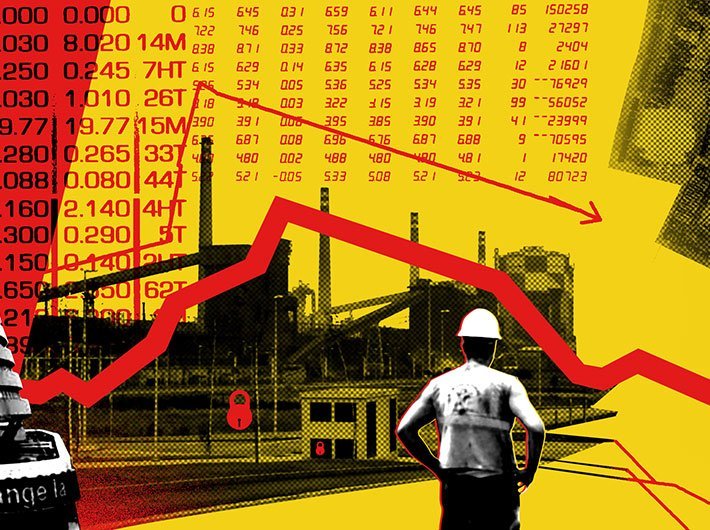For India to achieve its policy objectives, the government and industry, must prepare for opportunities and greater engagement in an evolving multilateral trade arena
India faces significant challenges in the area of trade policy— the global economic slowdown, increasing protectionism, the stalled mega-trade deals that could in time be revived, and perhaps more important, its own domestic preoccupations. For India to achieve its policy objectives, the government and industry, particularly the manufacturing sector, must prepare for opportunities and greater engagement in an evolving multilateral trade arena, said a paper in the Carnegie Endowment for International Peace.
India’s priorities should include taking policy measures to conform to global standards and supporting the World Trade Organization (WTO) to relaunch multilateral negotiations, wrote Hardeep S Puri, who served as India’s permanent representative to the United Nations in Geneva and New York.
Read: “Trade policy was pretty fundamentally restructured in about 10 hours”
The paper - “India’s Trade Policy Dilemma and the Role of Domestic Reform” India’s Foreign Trade Policy aims to (1) increase the country’s share of global trade from the current 2.1 percent to 3.5 percent and (2) double its exports to $900 billion by 2020.
However, India faces myriad obstacles: lack of full understanding of trade policy and its potential benefits, a poorly developed manufacturing sector, unsatisfactory results from regional trade agreements, and constrained relationships, including with its main trading partners.
India’s trade policy framework must be supported by economic reforms that result in an open, competitive, and technologically innovative Indian economy.
The share of manufacturing in the gross domestic product needs to rise through efficient implementation of schemes such as the Make in India initiative.
Read: US use of anti-dumping measures at WTO impacts India
On how to get there, Ambassador Puri writes: “Create an enduring global partnership with India’s major trading partners, particularly the United States. The two countries, along with other countries, must work to break down barriers to the movement of goods and services and support deeper integration into global supply chains.”
Also, actively and enthusiastically participate in the Regional Comprehensive Economic Partnership and seek to join the Asia-Pacific Economic Cooperation. Given that India is not party to any mega-trade deals (and may never be), this would be an important part of a positive trade policy agenda.
Immediately adjust to global standards on technical barriers to trade and sanitary and phytosanitary measures. With some trade deals currently on hold or not moving forward in their current form, India, particularly industry, has valuable time to conform to these standards.
Revive the primacy of the multilateral trading system. This revival is in India’s national interest since the country is best served by most-favored-nation treatment, largely provided by the multilateral trading systems anchored in the WTO. Unlike outside plurilateral arrangements, the WTO offers the best possible setting for pursuing a development-based trade agenda, the paper said.
Ambassador Puri goes on to say that the Trans-Pacific Partnership (TPP) and the Transatlantic Trade and Investment Partnership (TTIP)—while both have collapsed—are not the only manifestations of this evolving architecture. Various regional and subregional free trade agreements (FTAs) are already in place or likely to evolve.
To maximize opportunities within this environment, India will have to overcome
significant trade policy challenges: domestic issues; the evolving global situation; and the need for a positive trade policy agenda, as perhaps the only viable way for India to enhance its economic relationship with major trading partners. The United States—by far the world’s largest economy—will continue to set the global trade policy agenda, and the United States itself will have to rework some of its trade policy objectives in light of recent developments. These notwithstanding, the United States will still determine the trade agenda even if a vacuum in leadership is created at the WTO. India could, if it acts wisely and in an enterprising manner, take advantage of that vacuum.
“The greatest challenge to the development of a strong trade policy in India is its poorly developed manufacturing sector. Although it grew after India embarked on focused economic liberalization in 1991, the manufacturing share of the gross domestic product (GDP) has since fallen to 16.2 percent in 2015–2016—about what it was in 1989–1990 (16.4 percent). The question of how to substantially augment the share of manufacturing is a tough one with no easy answers. Constraints include the limited availability of power and land, lack of access to technology, low productivity, the rising cost of labour, and difficulties doing business. Progress has been made, but it has been insufficient. By far the most serious impediment to the revival of the manufacturing sector is the scarcity of land.”
Read: India’s Trade Policy Dilemma and the Role of Domestic Reform
